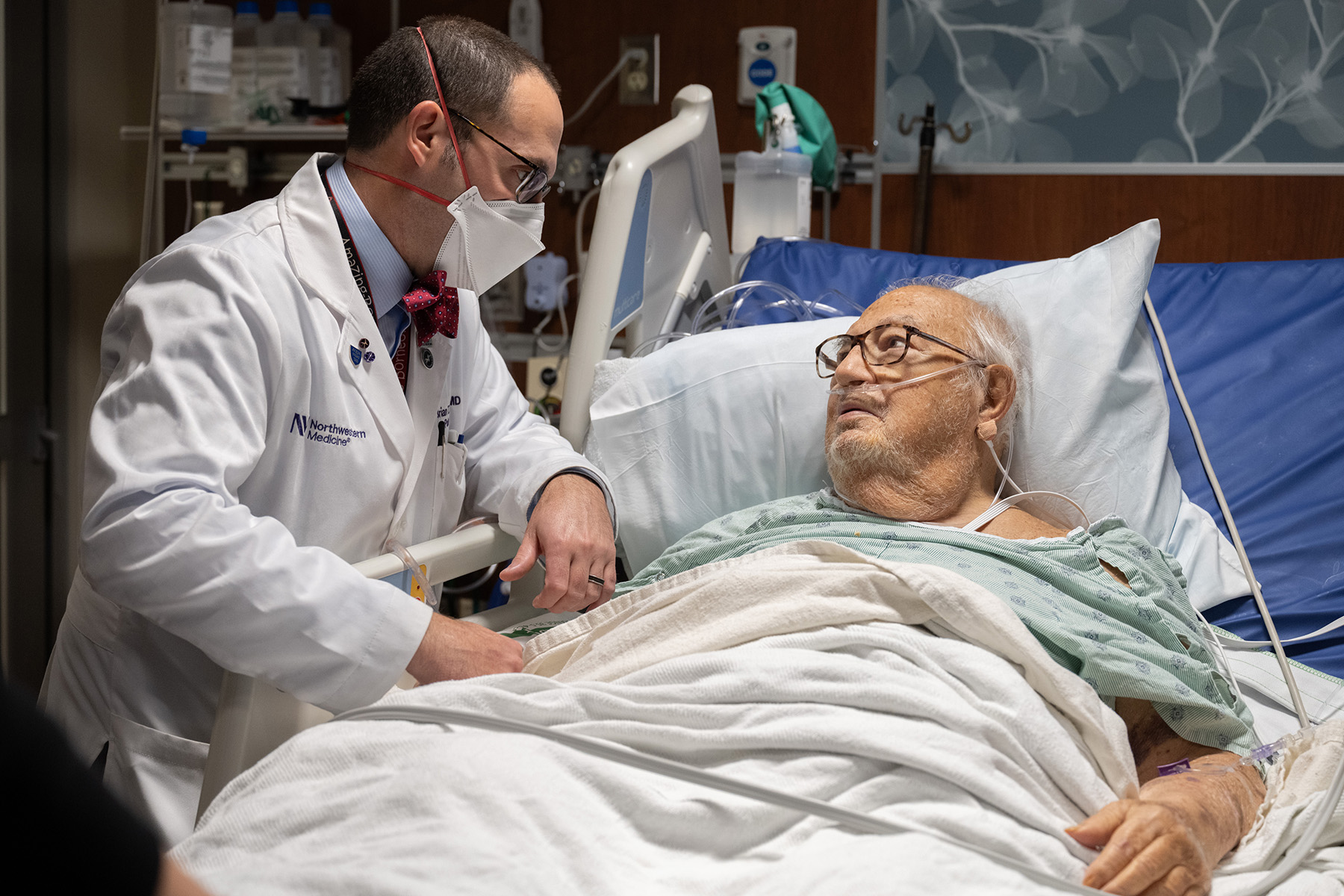This story was published in the December 2023 issue of the Breakthroughs newsletter.
Since the COVID-19 pandemic thrust many providers into telehealth appointments, scientists have been asking questions about the benefits and concerns of telehealth. According to an article in New England Journal of Medicine Catalyst, telehealth is defined as “the delivery and facilitation of health and health-rated services including medical care, provider and patients education, health information services, and self-care via telecommunications and digital communication technologies.”
While telehealth was in use and gathering interest prior to the pandemic, the need for it accelerated during a time when people were encouraged to stay home. Michael Wolf, PhD, ’02 MPH, director of the Center for Applied Health Research on Aging (CAHRA) and the James R. Webster, Jr., Professor of Medicine, has been studying telehealth and how it impacts people with chronic conditions.

In the early days of the pandemic, Wolf and his team recruited nearly 700 participants from active studies for a cohort they called “C3: COVID-19 and Chronic Conditions” in less than a week. Their goal was to understand how the COVID-19 pandemic impacted the health of adults living with one, if not multiple chronic conditions. The first survey was published in the Annals of Internal Medicine in April 2020, less than a month after their first survey was collected.
In subsequent months and years, Wolf’s team aimed to evaluate patient experiences of telehealth and health disparities in access, use, and satisfaction of telehealth visits during the pandemic through ongoing patient surveys about telehealth appointments and patient portal usage. To date, the C3 cohort has completed nine survey waves and this data proved valuable, contributing to 25-30 research publications by Wolf’s estimate.

A recent doctoral graduate in Wolf’s lab, Esther S. Yoon, PhD, MPH, MS, contributed to this work, designing survey questions and conducting interviews. “The pandemic was like an excellent test tube for studying telehealth and determining where there are gaps in care,” Yoon said.
The team conducted telephone interviews to track experiences of middle-aged and older adults with underlying health conditions that placed them at higher risk for infection and adverse outcomes from COVID-19 through the course of the pandemic, as defined by January 1, 2019 to December 31, 2022, and well beyond
Adequate access to telehealth was a concern, and the C3 study highlighted certain disparities. C3 Participants who reported not having a recent telehealth visit were, on average, older, healthier, and lived above poverty level. While the results are yet to be published, the need for telehealth research is important as healthcare decisions hinge on it, such as whether insurance companies cover the costs and in which instances they will cover telehealth, Wolf said.
Further, who is utilizing telehealth and what might be getting lost in a telehealth appointment are key questions to ask, Yoon said. “It’s important to look at telehealth and consider how we can best leverage who it could really benefit but also acknowledge the barriers that might impact patients.”
In addition to studying the barriers patients might face with telehealth – reliable Wi-Fi, smart phone or tablet technology, digital literary – there are questions about cadence and modes of telehealth.
“The question many are asking is what does this hybrid model look like?” Wolf said. “When do patients need to come for in-person care and when can they connect via video or audio? Especially for people with chronic conditions who may need blood pressure readings and other measurements.”
In addition to telehealth visits, Wolf’s team looked at patient portal engagement during the pandemic. The aim of that study, which is yet to be published, was to assess the prevalence of patient portal use before and during the pandemic among C3 cohort and investigate any disparities caused by sociodemographic factors.
They found that usage of MyChart doubled, but that there were disparities in who logged in and found that patients who were older, women, of a racial or ethnic minority, had lower health literary or had lower chronic illness burden were less likely to use the portal.
To formalize these efforts, the National Institute on Aging has funded the C3 study to explore the impact of the COVID-19 pandemic. COVID-19 pandemic was the impetus for this research and more remains to be studied including concerns about whether telehealth is effective and at what cadence. There are also concerns about disparities and inequities related to health literacy, access to care, transportation, etc.
“I think a lot of hope comes from this data and we can recognize that it’s a snapshot of time,” Yoon said. “Telehealth is going to continuously evolve.”






